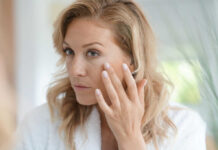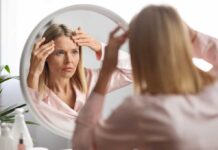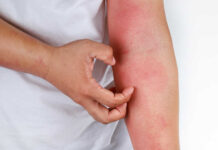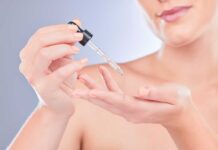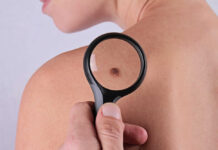
Wrinkles, sagging skin, and age spots are just signs of getting older, right?
Not necessarily.
While it’s true that your skin changes as you age, a lot of the visible aging that you see is actually due to sun exposure. Some experts say that around 80% of visible aging is due to sun damage and UV exposure.
How Sunlight Damages Your Skin
Sunlight contains ultraviolet (UV) rays, which are a type of electromagnetic radiation.
There are two types of UV rays that can reach your skin: UVA and UVB.
UVA rays are longer and can penetrate deep into your skin, causing damage to the collagen and elastin fibers that support your skin.
UVB rays are shorter and only penetrate the top layer of your skin, but they’re more intense and cause most of the irritation and redness associated with sunburns.
Both of these types of UV rays can damage your skin cells. They can even cause changes in your DNA, leading to abnormal elastin and collagen production. This means that the new cells produced by your body are not as strong or resilient as the original cells.
Over time, this damage accumulates and leads to visible signs of aging, such as wrinkles, sagging skin, and age spots. It also puts you at high risk of developing skin cancer.
Why You Need To Wear Broad-Spectrum Sunscreen
To protect your skin from the damaging effects of sunlight, you need to use sunscreen any time you are outside during the day—even when it is cold or cloudy (because UV rays can penetrate clouds).
But not just any sunscreen will do. It would help if you used a broad-spectrum sunscreen that protects against UVA and UVB rays. If it’s not specifically labeled as “UVA/UVB” or “broad spectrum,” it will probably only protect you from UVB rays—it might protect you from getting a sunburn, but it won’t do much to prevent the deeper damage caused by UVA.
You should also look for a sunscreen with an SPF of 30 or higher. Follow the instructions regarding timing, reapplication, and waterproofing, as these will vary from product to product.
Other Ways To Help Your Skin
In addition to wearing sunscreen, you can also help your skin (and the rest of your body) by eating a nutrient-rich diet. Specifically, you’ll want plant-based foods and beverages that are high in antioxidants.
As your body reacts to the sun’s UV rays, harmful byproducts known as reactive oxygen species (ROS) are produced. These ROS can damage your cells and tissues, causing inflammation and further contributing to the visible signs of aging.
Antioxidants are molecules that help to neutralize ROS, preventing them from causing damage. So, by eating foods that are high in antioxidants, you can help reduce the inflammation caused by sun exposure and protect your skin cells from further damage.
Some of the best foods for your skin are brightly colored fruits and vegetables, such as tomatoes, blueberries, and leafy greens. Green tea is also a great source of antioxidants.
You should also keep your skin moisturized and drink plenty of water. This will help to keep the outer layers of your skin hydrated and prevent them from drying out and cracking. This outermost layer is an essential barrier that helps to protect your skin from damage.
If your skin is dry, cracked, or inflamed, it will be more susceptible to the damaging effects of sunlight.



